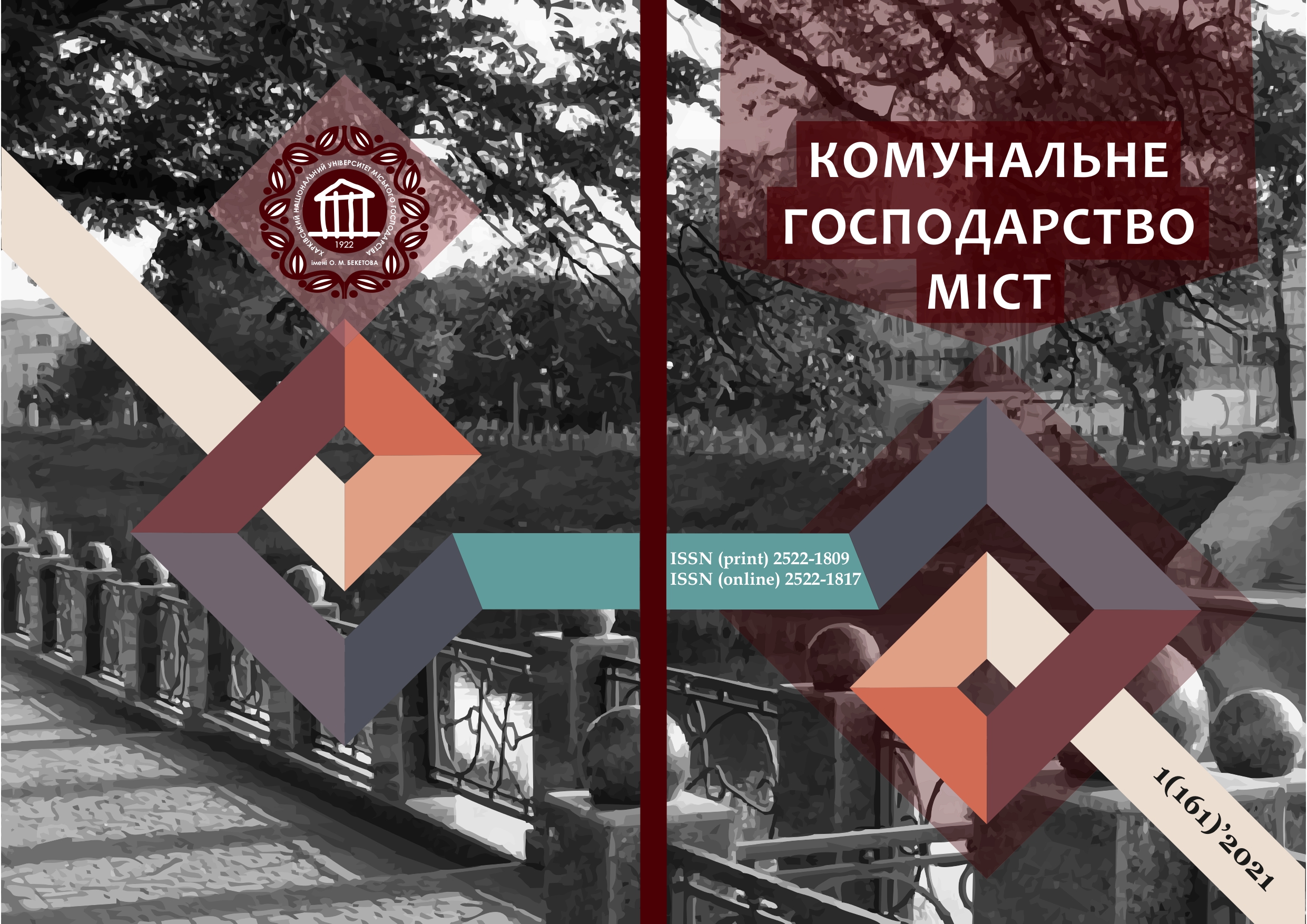ON THE QUESTION OF THE EFFECTIVENESS OF NETWORK TECHNOLOGIES IN AUTOMATED GAS SUPPLY SYSTEMS
Array
Keywords:
automated control system, complex of telemetry, GSM-technologies, PLIC controller, wireless communication channel.Abstract
The topical issues of development of automated control systems of gas control stations (GCS) and ways of reliable and economical functioning of the gas supply system in modern conditions have been considered in the article.
The implementation of European innovative technologies, which are associated with using the modern equipment, telemetry tools to transmit the equipment operation parameters to the dispatcher control panel are the one of the ways to increase the safety and efficiency of GCS performance.
The characteristic of the modern complex of telemetry, the raising of efficiency, reliability and safe operation of the gas supply systems due to the possibility of monitoring, technological control and management from the central dispatcher control room are given. The complex of telemetry helps to prevent emergency situations at facilities and to ensure control over unauthorized entry into the GCS premises by unauthorized persons.
The article discusses the use of the automated system of operative-dispatching management (ASODM). It is a multi-level automated system that ensures the reliable functioning of the gas supply system at all levels of the hierarchy.
It has been shown that the result of the creation of the ASODM are equipping of the control object with microprocessor control and management devices, the integration of various automation tools into a single information management system.
It has been proven that the development of ASODM of GCS on the basis of local control and management modules using traditional approaches to creation of automation systems and using the cellular telephone communication as data transmission channels based on GSM-technologies are most rational.
The digital control device, which is made on the technological platform of the programmable logic integrated circuit (PLIC), is the main element of the local control and management module. Digital control device (PLIC controller) is a relatively inexpensive and reliable equipment in an automated local GCS control system.
The method of data transmission via GSM / GPRS wireless communication channel is considered. The use of GSM-modems and GPRS technology allows to remove restrictions on the distance of data transmission, as well as allows to fully automate the process of transmission and processing of information.
The use of GSM / GPRS-technologies in the vehicles of the emergency dispatch service is also shown. The dispatcher can fully monitor the movement of the car with registration on the map of the city where the car is located.
References
2. Pupena O.M. Promyslovi merezhi ta intehratsiini tekhnolohii v avtomatyzovanykh systemakh: Navchalnyi posibnyk / O.M. Pupena, I.V. Elperin, N.M. Lutska, A.P. Ladaniuk. – Kyiv : Vyd-vo «Lira-K», 2011. – 552 s.
3. Pakhomov Yu.V. Modeli ta metody testoprydatnoho proektuvannia krytychnykh system lohichnoho upravlinnia na osnovi kintsevykh avtomativ: dys. na zdobuttia nauk. stup. kand. tekhn. nauk: 05.13.05 / Pakhomov Yurii Vasylovych. – Kharkiv: KhNURE, 2018.– 215 s.
4. Pakhomov Y.V. Model of automated hardware diagnostics of remote energy systems management points / M.A. Miroshnyk, Y.V. Pakhomov // Svitlotekhnika ta elektroenerhetyka: mizhnarodnyi naukovo- tekhnichnyi zhurnal. – Kharkiv: KhNUMH im. O. M. Beketova, 2017. – № 3. – P. 3–9.
5. Malinovskij M.L. Upravlenie ob"ektami kriticheskogo primeneniya na osnove PLIS: monografiya / M.L. Malinovskij. – Khar'kov : Fakt, 2008. – 224 s.
6. Malinovskij M.L. Matematicheskie modeli bezopasnykh PLIS-kontrollerov s parallel'noj arkhitekturoj / M. L. Malinovskij // Radioehlektronnye i komp'yuternye sistemy. – 2007. – №7. – C. 105–113.
7. Sidak V.S. Suchasni ta innovatsiini tekhnolohii v bezpetsi hazopostachannia: monohrafiia / V.S. Sidak, V.M. Suponiev, Yu.F. Bronevskyi; za zah. red. V.S. Sidaka. – Kharkiv: KhNUMH im. O.M. Beketova, 2015. – 433 s.
8. Shalyto A.A. SWITCH-tekhnologiya. Algoritmizaciya i programmirovanie zadach logicheskogo upravleniya / A.A. Shalyto. – SPb.: Nauka, 1998. – 628 s.
9. Grushvickij R.I. Proektirovanie sistem na mikroskhemakh programmiruemoj logiki / R.I. Grushvickij, A.KH. Mursaev, E.P. Ugryumov.– SPb: BKHV-Peterburg. – 2002. – 608 s.
10. Chernyshev N.N. Analiz primeneniya sovremennykh besprovodnykh tekhnologij dlya postroeniya vysokoproizvoditel'nykh sistem avtomatizacii / N.N. Chernyshev, I.A. Garmatenko // Zbіrnik naukovikh prac' Donec'kogo іnstitutu zalіznichnogo transportu. Serіya: – Avtomatika, telemekhanіka, zv'yazok. – 2014. – Vipusk 37. – S. 67–73.
11. Novi produkty ASU TP i KVP [Elektronnyi resurs]. – URL : http://ua.automation.com/produkty-dlya-avtomatizatsii
12. Avtomatizatsiia tekhnolohichnykh protsesiv. [Elektronnyi resurs]. – URL : http://microl.ua/index.php?page=shop.product_details&flypage=garden_flypage.tpl&product_id=157&category_id=68&option=com_virtuemart&Itemid=71
13. Intellektual'nye datchiki, ikh seti i informacionnyesistemy. [Elektronnyi resurs]. – URL : http://conf.mirea.ru/CD2012/pdf/p4/29.pdf
Downloads
Published
How to Cite
Issue
Section
License
The authors who publish in this collection agree with the following terms:
• The authors reserve the right to authorship of their work and give the magazine the right to first publish this work under the terms of license CC BY-NC-ND 4.0 (with the Designation of Authorship - Non-Commercial - Without Derivatives 4.0 International), which allows others to freely distribute the published work with a mandatory reference to the authors of the original work and the first publication of the work in this magazine.
• Authors have the right to make independent extra-exclusive work agreements in the form in which they were published by this magazine (for example, posting work in an electronic repository of an institution or publishing as part of a monograph), provided that the link to the first publication of the work in this journal is maintained. .
• Journal policy allows and encourages the publication of manuscripts on the Internet (for example, in institutions' repositories or on personal websites), both before the publication of this manuscript and during its editorial work, as it contributes to the emergence of productive scientific discussion and positively affects the efficiency and dynamics of the citation of the published work (see The Effect of Open Access).

